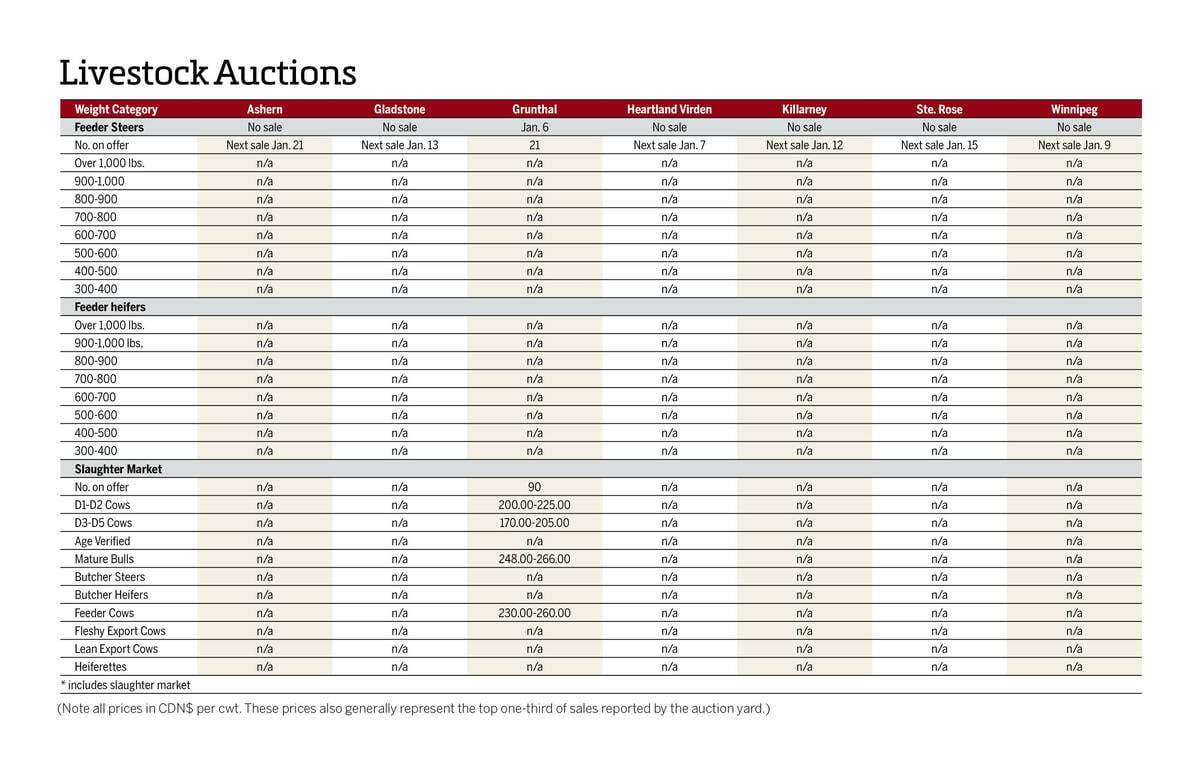Mini-donuts, churros, beaver tails, rollkuchen, funnel cake, corndogs, French fries, even Mars bars — they all taste better when fried in oil. The summer festival season of fried food from food trucks is just getting underway, while the markets for the vegetable oils filling all those deep fryers have also been heating up.
Soyoil
Since touching a low of 44.53 U.S. cents/lb. on May 31, nearby July soyoil futures found themselves in a near vertical uptrend, gaining more than 25 per cent in the span of two weeks. With sights firmly set on the 60 cents/lb. level, the major moving averages have also flattened out or turned higher after trending lower for the previous six months.
Read Also

Manitoba cattle prices Jan. 6
Grunthal was the first Manitoba livestock auction mart to kick off 2026 cattle sales in early January.
The contract blew past its 50-, 100- and 200-day moving averages in the span of a week, with 70 cents/lb. the next upside target if the rally continues.
Oilseed crushers in the U.S. processed 177.9 million bushels of soybeans in May, marking a new record for the month. A delayed announcement from the U.S. Environmental Protection Agency on biofuel targets has the potential to disrupt the soyoil market if it fails to lift soyoil usage numbers as many in the trade expect.
Where soyoil goes, canola typically follows. Gains in that market are supportive for Canadian crush margins. The November canola contract improved by 20 per cent off its late-May lows through the first half of June.
European rapeseed
The charts look similar for European rapeseed futures, with late-May lows followed by a solid correction higher. Heat and dryness hurt production prospects in parts of France, while the ongoing conflict in Ukraine may limit movement out of the country, despite improving yield estimates there.
Malaysian palm oil
Palm oil, the world’s largest vegetable oil crop, has an influence on all other vegetable oil-linked markets. In addition to broad speculative buying interest, palm oil has also found support from some weather worries of its own, as El Nino weather patterns limit moisture in key growing regions.
Labour shortages, under-fertilization and increasing demand from India have all contributed to the latest strength. A corruption scandal in Indonesia, the world’s largest palm-growing country, also has the potential to disrupt things.
Three palm oil-exporting companies in the country are under investigation, with some top executives facing jail time for manipulating documents and submitting false data to secure export permits when they were limited to keep local cooking oil prices in check.
















